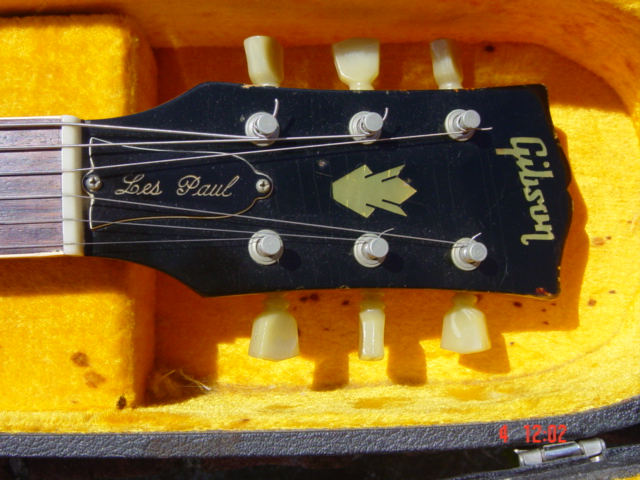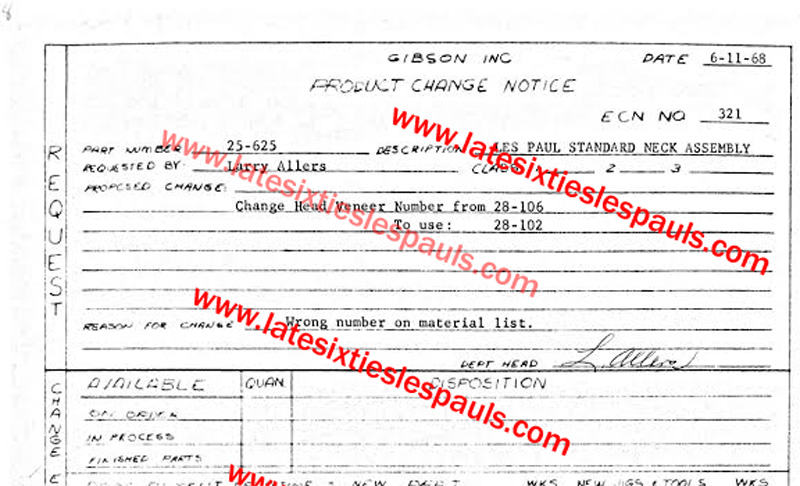Featured Article:
Solved: The Mystery of the Crown Inlay
In the 'Return of the Les Paul' advertising literature and the Gibson Gazette magazine released in 1968, the headstock of the soon to be released Les Paul Standard looks pretty familiar. Pearl inlay with dot over the i in Gibson? Check. Kluson tuners? Check. Blank headstock overlay with "Les Paul Model" silk-screen in gold paint? Check. So why do the earliest guitars to be sold have a headstock which looks like this?

Theories over the years often pointed towards legal or manufacturing challenges. Maybe the negotiations with Les took place simultaneously as the investment in tooling up for production? Maybe those negotiations weren't going very well, and Gibson wanted to apply leverage over Les by demonstrating that guitars would still sell without his name attached? Maybe during the process of retooling to build these guitars again some eight years after production originally stopped, the skill to use silk screens was lost? Maybe the silk screen itself was just missing, and it took time to create another one? I have observed many of these guitars overseas, perhaps they were "export" models?
Maybe, pluralitas non est ponenda sine necessitate?
Willam of Ockham was born in Surrey around 1285. As many Middle-Age theologians did, Ockham spent time and energy pondering the relationship of logic, reality, and religion. In the centuries that have passed since Ockham lived, a phrase became associated with his approach to considering the multitudes of explanations for reality circulating in his time. Pluralitas non est ponenda sine necessitate. “Plurality should not be posited without necessity." While some believe Ockham never said these precise words, the idea of "Ockham's Razor" is a common one in modern science and philosophy. A modern interpretation would be: Whenever faced with a multitude of possible explanations, oftentimes the simplest explanation will prove to be correct.
Someone selected the wrong part number.
Headstock veneer part number 28-106 was errantly put on the materials list for the new Les Paul Standard instead of 28-102. This was caught and corrected the second week of June 1968. How long did it take for the guitars that already had a neck with 28-106 installed to sell and ship to dealers? How many guitars were made with 28-106 installed?
These mysteries will continue, but at least we can stop wondering why the crown guitars exist in the first place.
UPDATE 083018: I now have permission to share Product Change Notice "ECN 321" which is the source of this article. Here is a portion of that document. Enjoy!!!

Sources: www.britannica.com/topic/occams-razor, www.britannica.com/biography/William-of-Ockham

